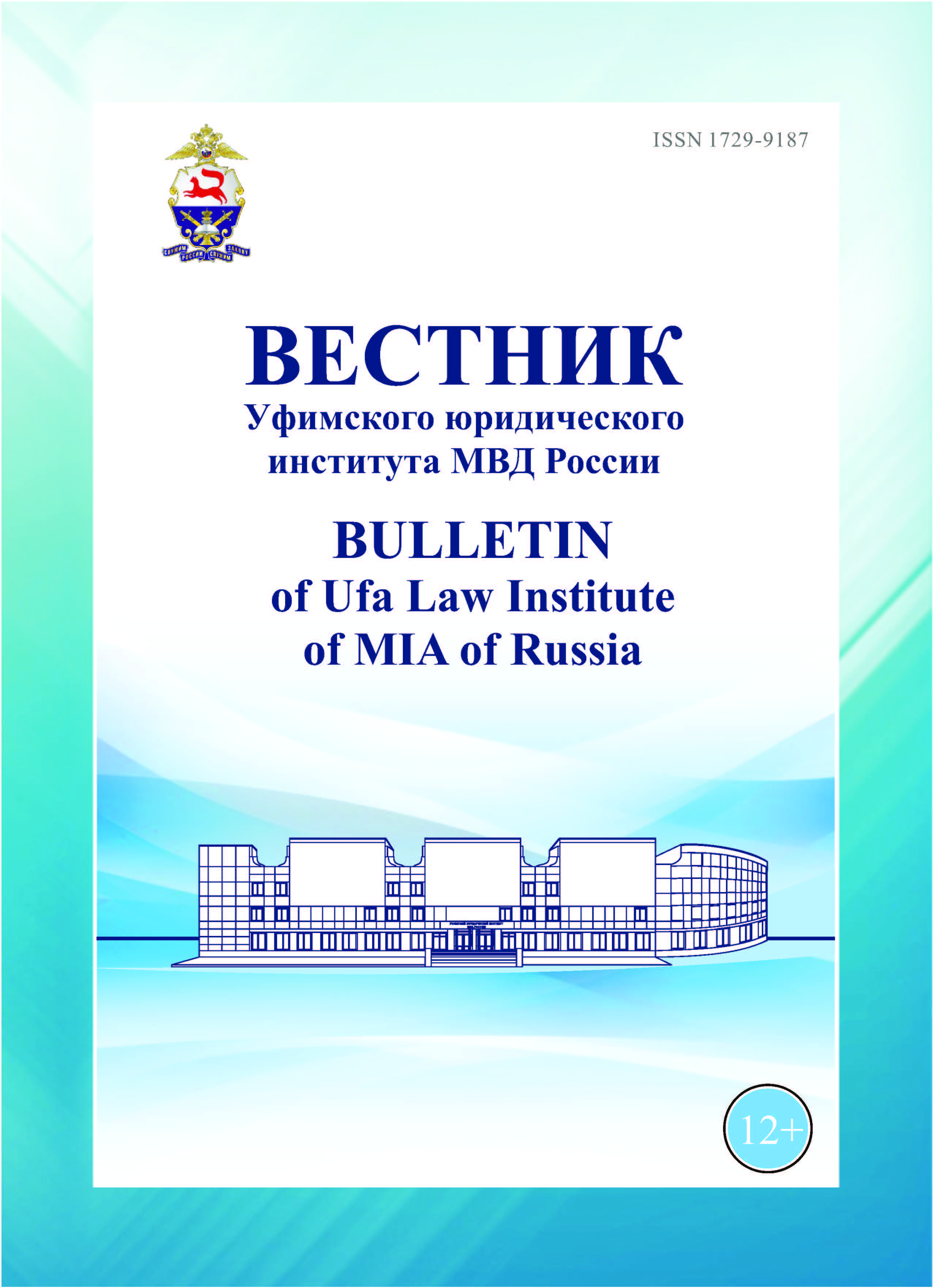(docent)
Siberian Institute of Business and Information Technologies (Department of Full-time Education, Docent)
Omsk, Russian Federation
UDC 343.985
The relevance of this work is due to the scientific problem associated with the fact that in the disclosure and investigation of bribery, where the criminal uses information and telecommunication technologies, certain difficulties may arise related to the detection and seizure of digital traces that characterize the mechanism of a corruption crime. It is noted that there is currently no comprehensive study dedicated to the identification of digital traces in the investigation of bribery. The scientific article proposes the introduction of forensic accounting of electronic traces of a crime, which will improve the interaction between investigators and interrogators located on the territory of different subjects if the same person has committed several crimes. The effectiveness of the investigation of bribery using computer and information technologies directly depends on the correct work on the detection, seizure, and investigation of digital traces. The role of a well-trained specialist who will assist in fixing and removing digital traces is invaluable.
bribery, digital traces, information and telecommunication technologies, crime investigation, investigative actions, investigator, bribe taker, bribe recipient, digitalization, blockchain technologies, cryptocurrency
1. Meshcheryakov V. A. Crimes in the field of computer information: legal and criminalistic analysis. Voronezh: Voronezh State University, 2001. 255 p. (In Russ.)
2. Agibalov V. Yu. The criminalistic essence of virtual traces // Bulletin of Voronezh State University. Series: Law. 2009. No. 2. P. 350–355. (In Russ.)
3. Smushkin A. B. Virtual traces in criminalistics // Legality. 2012. Issue 8. P. 43-45. (In Russ.)
4. Vekhov V. B. Fundamentals of criminalistic teaching on the study and use of computer information and its processing tools. Volgograd: Volgograd academy of the Ministry of Internal Affairs of Russia, 2008. 404 p. (In Russ.)
5. Vekhov V. B. Electronic traces in the system of criminalistics // Forensic examination. 2016. No. 2. P. 10–18. (In Russ.)
6. Bagmet A. M. Digital traces of crimes: monograph. M.: Prospect, 2021. 168 p. (In Russ.)
7. Rossinskaya E. R. The concept of digital traces in criminalistics // Aubakirov readings: proceedings of the international scientific and practical conference. Almaty, 2019. P. 6–9. (In Russ.)
8. Volevodz A. G. Countering computer crimes: legal foundations of international cooperation. Moscow: Yurlitinform, 2002. 496 p. (In Russ.)
9. Meshcheryakov V. A. Virtual traces under the “Occam scalpel” // Information security of regions. 2009. No. 1. P. 28–33. (In Russ.)
10. Rossinskaya E. R. Theory of information and computer support for forensic activities. Moscow: Prospekt, 2022. 256 p. (In Russ.)
11. Rossinskaya E. R. Problems of using special knowledge in the judicial study of computer crimes in the context of digitalization // Bulletin of the University named after O. E. Kutafin (MSAL). 2019. No. 5. P. 35–36. (In Russ.)
12. Boyarkina L. A. Digital footprint and digital shadow as derivatives of personal data // Collections of conferences of SIC “Sociosphere”. 2016. No. 62. P. 78–81. (In Russ.)
13. Semikalenova A. I. The use of special knowledge in the detection and fixation of digital traces: an analysis of modern practice // Current problems of Russian law. 2019. No. 6 (103). P. 178–184. (In Russ.)
14. Zuev S. V. Fundamentals of the theory of electronic evidence: monograph. Moscow: Yurlitinform, 2019. 383 p. (In Russ.)
15. Frolova E. Y. Methodology of investigation of corruption activities in law enforcement and judicial bodies: dis. ... Cand. of Law. Krasnodar, 2005. 217 p. (In Russ.)









